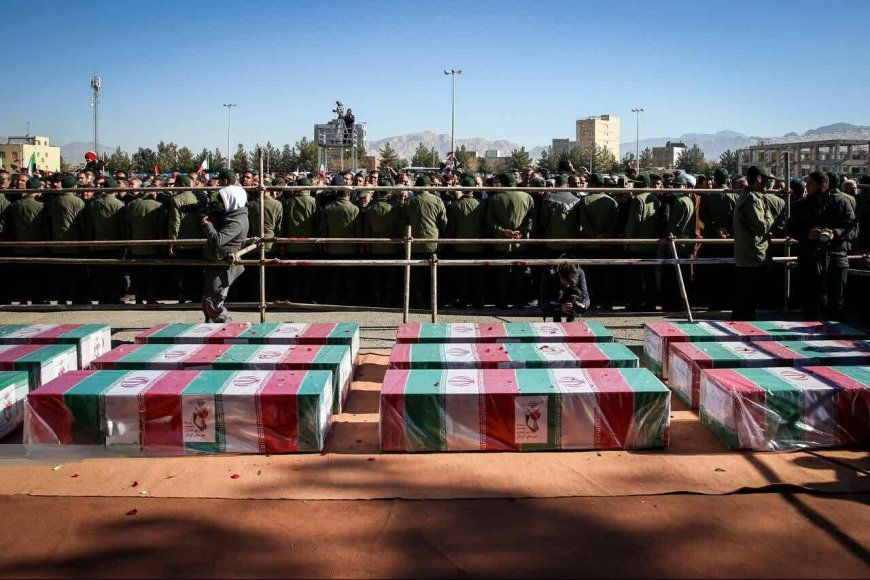The Kerman Terrorist Attack: Tracing the Footprints of CIA and Mossad
On Wednesday, January 3, a twin explosion shook the southern Iranian city of Kerman, resulting in a devastating loss of innocent lives. Two terrorist blasts occurred on the road leading to the city's Martyrs' Cemetery, claiming the lives of numerous civilians, including women and children. In the aftermath of this abhorrent crime, the spokesperson of the US State Department denied any involvement by the United States in the heinous terrorist attack, also dismissing any complicity on the part of the Israeli regime. Within a mere day, ISIS claimed responsibility for this abominable act of terror.

The war crimes committed by the United States and its ally, the Zionist regime, against innocent civilians, particularly women and children in the Middle East, are no secret. Since the dawn of Iran's Islamic revolution in 1979, the country has regarded Washington as a malevolent force, poised to undermine its national security. This perception has gradually solidified over time, to the extent that the majority of the Iranian nation deems the US a terrorist state.
Just as a reminder, on July 3, 1988, an Iranian Airbus carrying 275 passengers of various nationalities and 16 crew members tragically crashed into the Persian Gulf, never reaching its intended destination. The flight, bearing the number IR655, was struck by two RIM-66 guided missiles launched from the American naval vessel USS Vincennes. This calamitous incident claimed the lives of 66 children, 52 women, and 172 men, including individuals from Yugoslavia, India, Pakistan, Italy, and the United Arab Emirates. It is, therefore, reasonably plausible to assume that the Kerman terrorist attack was organized by CIA operatives, the Israeli regime, or their regional protégés. Even when the United States is not directly involved in acts of terror against civilians, its indirect complicity through proxies cannot be overlooked. Also, the Israeli regime's war crimes and its occupation of Palestine have been consistently supported and guided by the United States.
Back in 2011, the Pentagon and the US State Department listed al-Baghdadi, also known as Abu Du’a, as a wanted criminal, offering a reward of ten million dollars for his capture. Paradoxically, this very action by the United States provided an excellent opportunity for al-Baghdadi to ascend to a leadership role within the ISIS, commencing a reign of terror in Iraq and Syria and perpetrating atrocities against the local populace, particularly women and children. Al-Baghdadi's terrorist activities, though suppressed by the late Lieutenant General Qasem Soleimani, have left an indelible mark on the region and beyond.
As a matter of fact, the inception of ISIS and other Takfiri terrorist groups can be traced back to the policies of American administrations, an admission made by none other than Hillary Clinton. Therefore, although US officials may not have explicitly claimed responsibility for the recent terrorist attack, the unmistakable footprints of the CIA and Mossad are discernible. Yet, one must ponder why both the United States and the Zionist regime promptly disavowed any involvement in this attack. Several reasons can be posited to shed light on this complex scenario.
Firstly, both Washington and Tel Aviv are well aware that the Islamic Republic of Iran, with its unwavering commitment to justice, would not permit this act of terrorism to go unanswered. Therefore, by immediately denying any role, the American-Israeli axis hoped to avoid Tehran's crushing response in the aftermath of the attack.
Secondly, the international community's unequivocal condemnation of this terrorist act stems from the fact that it targeted innocent women and children. Thus, any government assuming responsibility for this shameful attack would inevitably face condemnation from global public opinion. Such an outcome would invariably tarnish Washington’s international standing.
Lastly, the Israeli regime, which finds itself teetering on the precipice of an imminent downfall, regards this terrorist attack as a catalyst for its collapse. Hence, the regime has categorically refused to assume responsibility, thereby evading any accountability to its own public opinion.
However, the crucial question that arises is: given the above theories, why did this terrorist operation take place despite the immense risk it presented to both the Israeli regime and the United States?
The American government, beset by numerous challenges following the conflict in Ukraine and the widening rifts in US society arising from the Israeli war on Gaza, sought to cultivate unity and political harmony in Israel. To put it in other words, the terrorist attack in Kerman was a calculated attempt to mitigate the Israeli regime's internal fragility and prevent its ultimate collapse.
Other reasons behind this nefarious attack include instilling fear and insecurity in Iran, sowing despair in the hearts of Iranian citizens, inciting instability, and fostering social discontent against the government.
In conclusion, the terrorist operation in Kerman was a multidimensional assault. The Americans not only refrained from condemning the attack but tacitly supported the loss of innocent lives, engaging in a war of narratives. However, the resounding response from global public opinion and the people of Iran demonstrated that despite the meticulously crafted plans behind this large-scale terrorist operation, the perpetrators made grave miscalculations. The consequences of this flagrant violation of human rights shall be severe for the terrorists involved.













































